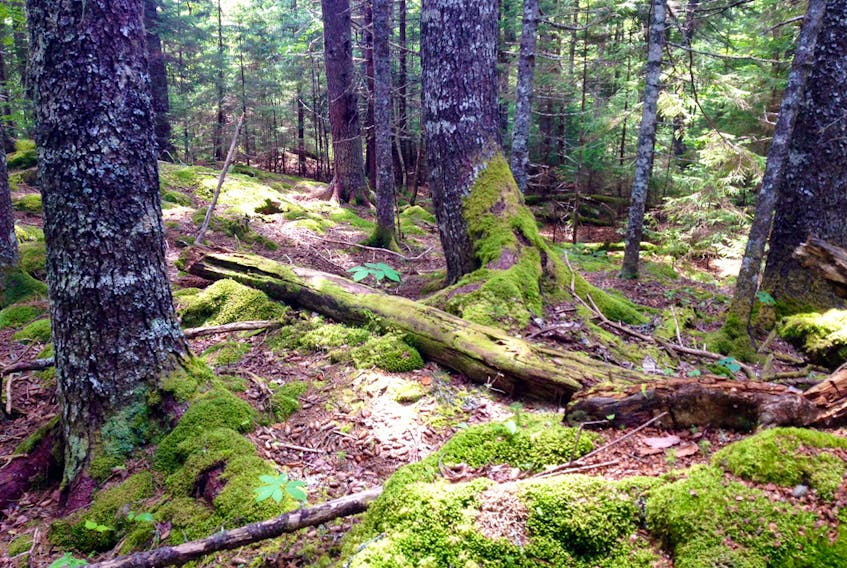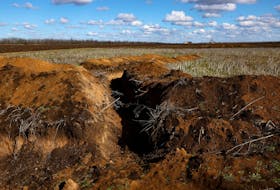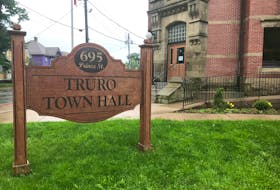RIVERSIDE-ALBERT, N.B. – The Nature Conservancy of Canada (NCC), in partnership with the Village of Riverside-Albert, has purchased and conserved 132 hectares (326 acres) of old Acadian forest in southeastern New Brunswick. This project not only conserves a rare type of forest, it also protects the water reservoirs and water supply for the 300 residents of Riverside-Albert.
Ownership of nine hectares (of the 132-hectare property) immediately surrounding the reservoirs will be transferred from NCC to the Village, for conservation and management of the water supply. Previously, the entire property had been privately owned, and the Village’s water supply was made available under a 100-year “water lease,” which was set to expire in 2019.
Denise Roy, NCC conservation representative describes the partnership as “an incredible win-win”.
“The Nature Conservancy of Canada has conserved one of the last remaining examples of old Acadian forest in the Maritimes, and, at the same time, these old trees will continue to filter and provide the water supply for the people of Riverside-Albert,” she says. “We would like to thank the Government of Canada and our many donors in the community and across the province for helping us complete this important conservation project.”
The Nature Conservancy of Canada’s newest protected area is located between the Caledonia Gorge Provincial Protected Natural Area and the Village of Riverside-Albert. The NCC property features red spruce, sugar maple, red maple and yellow birch, which are characteristic of the original Acadian forest of the Maritimes. The majority of the trees in the protected area are more than 80 years old. NCC prioritized the property for conservation because less than five per cent of mature Acadian forest, the original forest type of the Maritimes, remains intact due to centuries of settlement and harvesting. Two species identified on or near the property that are listed under the Species at Risk Act are chimney swift (threatened) and eastern wood-pewee (special concern).
Conservation of this property was made possible with funding from the Government of Canada, through the Natural Areas Conservation Program (NACP). The Province of New Brunswick; the New Brunswick Regional Development Corporation; the New Brunswick Wildlife Trust Fund; Crabtree Foundation; McCain Foundation; Chipoudy Communities Revitalization Committee; Shepody Fish & Game; EXP Services; Natural Forces Technologies Inc; Margo Sheppard; Darrell and Kathy Weir; the Lockhart Foundation and many other private donors also contributed to the success of this conservation project. An anonymous New Brunswick donor also made a significant donation, which helped complete the project.
Quick facts
– Mature trees aged 80 years or older cover 90 per cent of the property.
– The Acadian forest is the name for the type of forest that existed in the Maritimes, southern Quebec and New England at the time of European settlement. It is characterized by its diversity. Made up of 32 species of trees, it’s a mix of southern temperate forest species (mainly hardwood) and northern boreal forest species (mainly softwood).
– The most common of the 13 Acadian forest species found on the property are red spruce, yellow birch and sugar maple.
– Provincially rare plants, such as the lesser purple-fringed orchid and Braun’s holly fern, are found on the property. Braun’s holly is one of 11 species of fern on the property.
About The Nature Conservancy of Canada
The Nature Conservancy of Canada (NCC) is the nation's leading land conservation organization, working to protect our most important natural areas and the species they sustain. Since 1962, NCC and its partners have helped to protect more than 1.1 million hectares (2.8 million acres), coast to coast. The Nature Conservancy of Canada has conserved 29,500 hectares (74,000 acres) in Atlantic Canada.
The Government of Canada's Natural Areas Conservation Program (NACP) is a unique public-private partnership to accelerate the pace of land conservation across southern Canada. The Nature Conservancy of Canada (NCC) manages the program. Federal funds are matched by contributions raised by NCC and its partners. Habitat conserved under the NACP enhances natural corridors and other protected areas.









